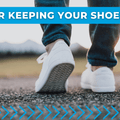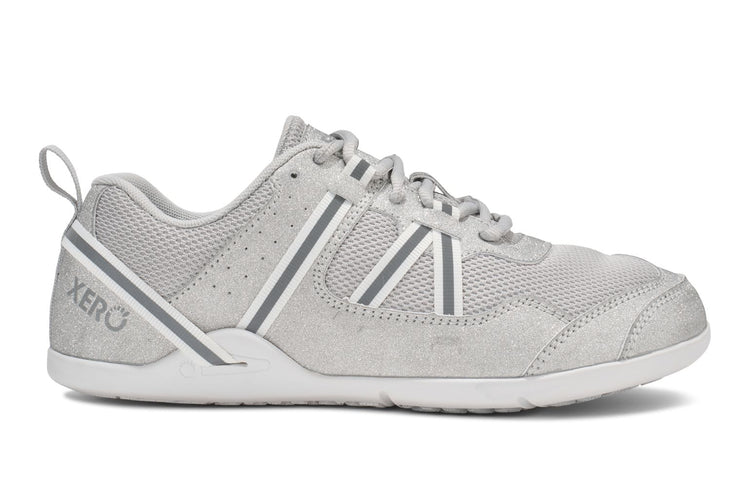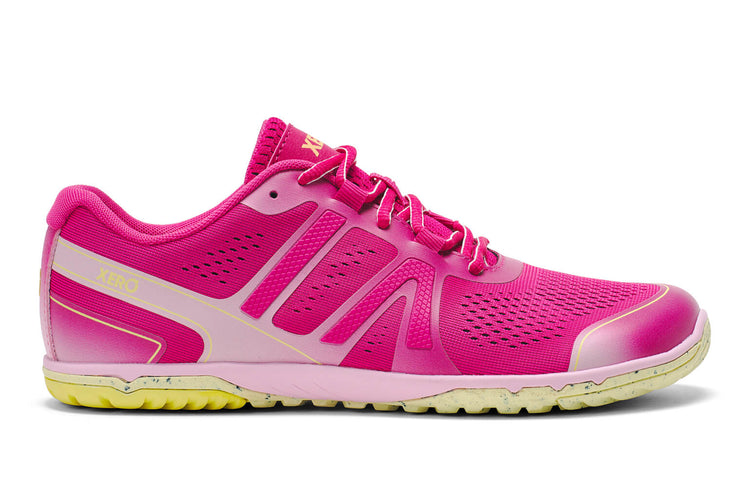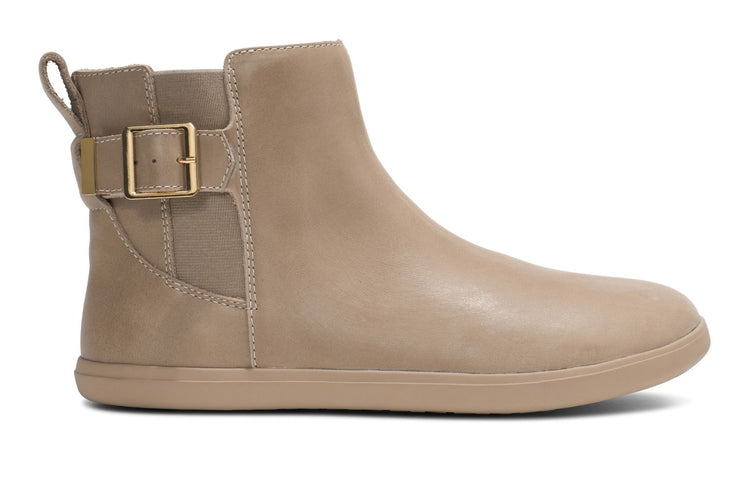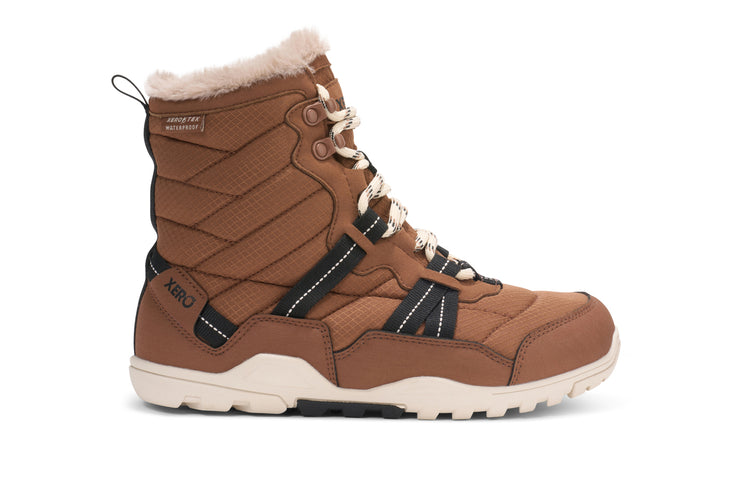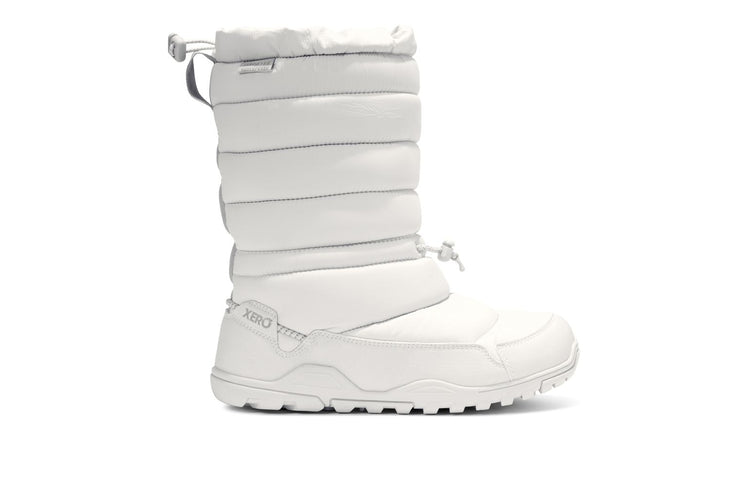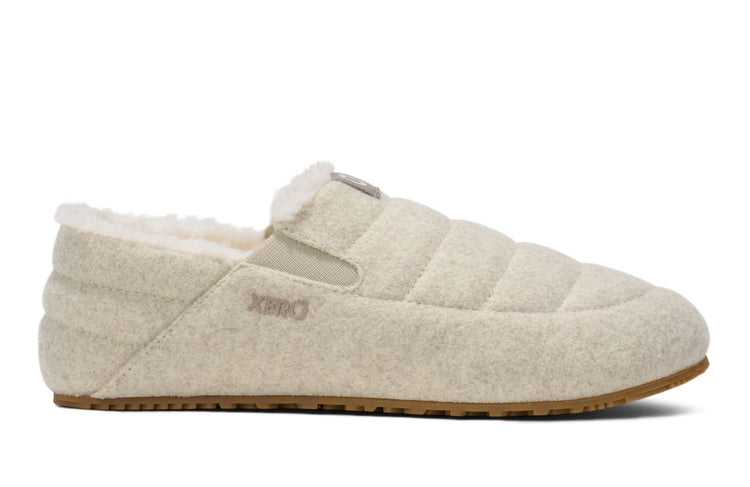“The Dream Shoe”: A Partnership with Xero Shoes & Born to Run 2 Authors
latest News
University of Colorado Barefoot Running Study
The media is having an anti-barefoot running field day thanks to a study published by some people right up the street from me at the University of Colorado (BTW, I've been living in Boulder for 19 years and nobody has been able to explain why they call the university CU instead of UC.).Each of the dozens of articles about the study has a distinct flavor of elementary school playground taunting, "Nah, nah, nah, nah, boo, boo… barefoot running isn't good for you!"I mean, check out some of the headlines: Debunking the Barefoot Running Myth - Sydney Morning Herald (barefoot running isn't like bigfoot!) Here's Proof Barefoot Isn't Better -- Running Times (Ha! So there!)It almost feels like the press is enjoying creating a backlash to all the "pro" barefoot articles of the last two years, even though in every barefoot article I've read the media insists on publishing "both sides of the story," and includes some doctor who's never run a meter in bare feet and wouldn't know decent barefoot running form if it ran him over, claiming that running without shoes will hurt you, bring shame on your family, and accelerate the coming apocalypse.So, let's take a deep belly breath or two and have a chat about the study. In fact, let's start by talking about studies, in general:Designing a biomechanics study is not easy. Aside from deciding exactly what you want to explore and the best design of the study itself (how you can test it), finding enough of the right kind of participants is often tricky, if not impossible.It's even more difficult to design a study that isn't artificial in some way. That is, it's showing effects in a lab that may not be relevant in the real world.And, even more, many studies, while interesting, may not be relevant to the broader population. (Whenever someone quotes a study, or even just the habits, of elite marathoners, I respond "Unless you're 5'5" and weigh 105 pounds and run at 13 miles per hour for two hours... WHO CARES what those guys do?)Finally, the way the media picks up a study -- this one or any of the previous barefoot studies -- often adds some spin that isn't in the actual study.All of the issues I just raised are relevant as we take a gander at the CU study. BTW, if you want to see a lively and cogent critical look at the study, you can't go wrong with reading the comments on the New York Times article about it. Frankly, this post probably won't be as lucid as some of the comments there.Okay, let's jump into it… The gist of the study:"In the study, 12 subjects with substantial barefoot running experience ran at 7.5 MPH with a mid-foot strike pattern on a motorized treadmill, both barefoot and in lightweight cushioned shoes (~150 g/shoe, 5.4 oz). In additional trials, they attached small lead strips to each foot/shoe (~150, ~300, ~450 g). For each condition, they measured the subjects’ rates of oxygen consumption and carbon dioxide production as an index of metabolic cost.”And the results:a) For every 100g (3.5oz) (the average weight of a deck of playing cards) added per foot, energy cost increases by approximately 1% whether running barefoot or shod.b) Running barefoot and in lightweight shoes do not significantly differ in energy cost.c) When controlling for shoe/foot mass, running in lightweight shoes requires ~3-4% less energy than running barefoot."Now, let the fun begin. Can you find the "confounds" (the factors in the study that might affect the results, or the interpretation of the results)?I'll start. Let me know if you find more.1) How did they determine that the 12 subjects had "substantial barefoot experience?" Well, the study says, “8 km/week barefoot or in minimal running footwear (e.g. Vibram Five Fingers) for at least 3 months out of the last year.”Does 3 months out of the last 12 really equal "substantial?" I've been barefoot for 3 years, and I'm STILL improving my form.And if that three months was wearing VFFs or minimalist shoes, that counts as "barefoot experience" Uh…As I've commented, and as the American Council on Exercise showed, and as Pete Larsen from www.runblogger.com captured on video: VFFs are not the same as barefoot.Now the researchers did verify that the subjects all ran with a "midfoot or forefoot" landing. I know that Lee Saxby, the spokesman and coach from Vivobarefoot would have an issue with that. He doesn't think midfoot is proper barefoot form (there's some debate about that, but it's besides the point at the moment).2) They ran on a treadmill. Look, I get that testing runners on an actual track is hard and expensive, but running on a treadmill is not the same as running on the ground, end of story. It may give some useful data, but if it walks like a duck and quacks like a duck, but the duck is on a treadmill… hmmm, that analogy isn't quite working, but you know what I mean.I did some high-speed video analysis of my running at the Monfort Human Performance Lab. I hit 21 mph on that treadmill. I can tell you that when I'm on a treadmill, my stride is different than on the track. I overstride so I can "catch" the treadmill belt, for example.3) To simulate a running shoe's weight, the researchers put lead weights on the top surface of the runners' feet. Do you think some small weights pressing down on your foot is different than having that same amount of weight distributed evenly, and mostly under your foot, thanks to the design of the shoe? I do. Does that matter? Could be. Is there a way to check… not easily.4) The runners were at 7.5 miles per hour. That's slow for an elite runner -- about 200 meters in a minute, a quarter mile in 2 minutes, a mile in 8 minutes -- but fast for most casual runners. This raises a few questions:a) How was that pace compared to the runners' usual training pace? b) Does speed make a difference? c) What about turnover, or cadence? Were those controlled and the same when the runners were barefoot vs. shod?Got me. But, suffice it to say, we're seeing the artificial quality of the study.5) Oh, this wasn't mentioned above, but I'll give it to you now: the runners were wearing yoga socks. "“For the duration of the experiment, subjects wore very thin, slip-resistant yoga socks for safety and hygienic purposes.”Hygienic purposes? Uh, some 409 and a paper towel would handle any "hygiene issues." And "safety"? If you read the study, one aspect of "safety" is "avoiding blisters."Boy, where to start on that one? We know that socks does not equal barefoot, and we also know that if you get blisters when you run barefoot, you're doing something wrong. So, this brings us back to number 1 -- how experienced were these runners really?6) The study measured oxygen consumption and carbon dioxide production. Okay, that's a fine way to measure efficiency, based on the idea that using less oxygen and producing less CO2 means you're using less effort, and that equals being more efficient.But here's a question: So what?For one: does using less energy equate to faster times? It seems like it might, but that's not a given.Does the amount of extra energy being used by *some* of the barefoot runners have any relevance to the average runner? Someone for whom 7.5 mph is too fast… or even too slow?7) Oh, here's a favorite. The runners in the study wore an ultra-lighweight racing flat. Most runners wouldn't wear those. And most runners with no barefoot experience wouldn't find those any friendlier than being shoe-free.8) One other thing: A hallmark of the scientific method is reproducibility. Just because one lab gets a result, that doesn't mean the question is resolved. When a study is reproduced in independent labs and the same (or very similar) result is obtained... then you know you've got something.What if the study is correct, though? What if barefoot running is less efficient than shod running?The only answer I can come up with is: Who cares?I don't mean that it's not important to know. I mean, literally, who should care?If you never race, you'll never notice any difference in efficiency (assuming, again that "decreased efficiency" = slower times).Besides, there are MANY other reasons to run with bare feet than the idea that it's more efficient... many that have barely been touched on (Dr. Michael Merzenich and I have had some interesting chats about how being barefoot could help the elderly in various ways). Personally, I didn't make the switch for efficiency's sake. In fact, for me, as a sprinter, I know I'm more effective in spikes than barefoot. I switched because it helped me correct some form problems, eliminated injuries I was getting, turned running from a chore into an enthralling discovery, and, more importantly... WAS FUN.Don't get me wrong, I'm thrilled that my Boulder neighbors are researching barefoot running. And while this is the first published study, I know they have more coming and I'm looking forward to those.And I'm certainly not blaming them for how the media is handling the story.My only interest is the continued exploration, conversation, and understanding of efficient movement, running for speed and/or distance, and the ways of teaching and exploring barefoot running (and walking and hiking).No one study can perfectly address all of the open questions. But the almost combative attitude where everyone wants to jump on some one-sided "We're better!" bandwagon certainly doesn't help.Suffice it to say, this study is not the death knell of barefoot running that many media outlets are portraying it to be (because, you know, controversy is more important than truth if you're trying to sell papers).Now, if you'll pardon me, I have to burn off some of my frustration by putting on some yoga socks and minimalist shoes and going for a barefoot run.p.s. (added on 4/4/2012):I just realized that the conclusion of the study was WAY off base!Here's whyThe researchers think that the improved efficiency of the shoes came from the PADDING absorbing some of the stress that the muscles have to handle when you're barefoot.In other words, the ENTIRE efficiency effect could be ALL about the padding and have nothing to do with weight. The weight issue would only be valid if they tested multiple shoes of the same weight with different types of padded outsoles and got the same results.The content of this post does not constitute and is not intended to be a substitute for professional medical advice, diagnosis or treatment. Always seek the advice of a physician or other qualified health provider with any questions or concerns you may have about your health or a medical condition.
Dr. Mark's brilliant Natural Running video
Dr. Mark Cucuzzella is not only FAST (he won the US Air Force Marathon this year), he's committed to understanding the facts of barefoot running (and minimalist, too).As a physician, professor, and owner of Two Rivers Treads running shoe store, Mark is all about getting people running safely, enjoyably, and easily. Plus, he's a really nice guy.Mark just released an incredible video about "Natural Running." His emphasis in the video is about running barefoot, but his point is that if you run with a natural gait, you may be fine in a minimialist running shoe, too.Check out this video and let me know what you think.One of my favorite parts is simply seeing mark run... FAST. There are so many critics who say "You never see barefoot runners who have any speed" (forgetting, of course, Abebe Bikila, Zola Budd, Ron Hill, and many other fast, barefoot Olympians).I also like how Mark doesn't emphasize exactly how your foot is supposed to hit the ground other than "don't heel strike." A number of us, including Mark and Pete Larson (of www.runblogger.com) have been saying, "There will be individual differences in how you land on your foot -- from flat-footed, to fore-foot -- that will depend on your physiology and biomechanics as well as how fast you're running and whether you're running uphill, downhill, and even on the surface."That said, most new runners may want to focus on a forefoot strike at first, if for no other reason than many of us have lost our proprioceptive skills from years of wearing shoes and may think we're mid- or fore-foot landing when we're still heel striking. I've had more than my share of runners try to convince me that their heels never touched the ground, even when looking at video showing them clearly heel striking.Thanks to Mark for this great addition to the world of barefoot and natural running.The content of this post does not constitute and is not intended to be a substitute for professional medical advice, diagnosis or treatment. Always seek the advice of a physician or other qualified health provider with any questions or concerns you may have about your health or a medical condition.
Barefoot in Asia - Regev's Review
I just realized that I have a strange history with barefoot running, barefoot walking, and minimalist shoes.First, like most of us, I spent a lot of time barefoot as a kid in the Summer. I went to a camp in the Pocono Mountains (Camp Shohola just in case any readers also went there) and whenever I had the chance, I was barefoot (made easier by the fact that I spent half of my days doing water sports). I was a competitive diver, too, so that kept me out of shoes.In junior high school and high school, I was a gymnast, so that was even more barefoot time every day.When I was 18, I went to New York City to be a street performer. I had already been doing this in Washington, DC, doing a magic act in Georgetown, and on K Street, near the White House. When I got to NYC, though, I found it much harder to get a crowd and, even worse, within a few weeks, the other street magicians had stolen all my bits! I asked one of the veteran street acts what I should do and he said, "Simple, write an act that nobody would dare steal."I pondered this for a while, until I landed on the answer. I created an act that had a bunch of crazy gymnastics in it (I did a running front flip over someone's head, stealing their hat and placing it on my head while in mid-flip), and a finale where I... wait for it... walked on broken glass in my bare feet.Now let me back up. For the gymnastics part of the act, I wore minimalist shoes. They were some old Adidas (I can't remember the name), with zero-drop, very little toe spring, not much padding. Just enough between me and the ground so I didn't kill my feet. This was in 1980-81, BTW.I loved these shoes. I bought every pair I could find. When I could no longer find them, I asked the local running shoe store what happened and he answered, "Adidas stopped selling them; they were lasting too long."I don't know if his info was accurate but, if it was, it wouldn't be the first time a company pulled a product that didn't wear out or go obsolete fast enough.Luckily, I found a company that sold shoes to prisons (you can find ANYTHING in NYC), and they had the last few pairs of these shoes... I bought them all. And they lasted through some serious abuse.Okay, back to walking barefoot on glass, though. Let's just say that it's part physics, part showmanship, and part some-hard-to-describe-thing that, if I could convince you to jump onto a 3" high pile of shattered beer bottles, you would instantly get a knowing look in your eye and say, "Ahhh... I get it now."In 5 years and thousands of shows, I only got one small cut. But by the end of the day, my feet were FILTHY from being barefoot on the street.CUT TO: Going to Asia in 1989.This is where I got hooked on being barefoot. Aside from the fact that you never wear shoes into almost any building (I was in China, Nepal, India and Thailand), there were plenty of opportunities to be barefoot outside as well. There were also plenty of times where you wanted something on your feet, but not much because it was really hot when I was there, and anything more than a sandal was way too much.When I came back from Asia, I stuck with the habit of removing my shoes whenever I went into someone's home (we've saved a fortune on carpet cleaning by not dragging dirt in from the outside).Okay, so why this long story?Simple, I was reminded of it all when Regev Elya did his review of Xero Shoes, which he took on a 7-month trip through Southeast Asia (I'm SO jealous).Of course, I think that Xero Shoes are the best minimalist shoes for a trip like that... but check out what Regev says.
Sh*t Runners Say to Barefoot Runners
Okay, barefoot runners, friends of barefoot runners, people who think running barefoot is silly, and anyone else who has ever seen, heard of, made fun of, or been married to someone who maybe heard of running barefoot or saw a picture of some Vibram FiveFingers (in other words: Hi, everyone!)...Here's the follow-up to the viral Sh*t Barefoot Runners Say (over 170,000 views as I write this).Inspired by, well, all the things I've heard runners say as I trotted about town without my shoes, or in my huaraches running sandals, it's Sh*t Runners Say To Barefoot RunnersShare this on FB, Tweet it, email about it, +1 it... let's make this one even more successful than the original!Aaarrrrrrrhhhh!
Barefoot Sandals - the best minimalist running shoes
Every now and then, someone will smugly say to me:"Barefoot Sandals is an oxymoron. If you're barefoot, you're not wearing sandals, and if you're wearing sandals, you're not barefoot!"Yes, technically, that's true. Barefoot is barefoot and shod is shod.And, I'll admit, I'm normally a stickler for grammar. I hate when people say "very unique" (something can't be VERY one-of-a-kind), and don't even get me started on "a whole nother" ("nother" isn't a word! You mean "another whole").But for "barefoot sandals" or barefoot shoes or even bare feet shoes, I'm willing to be a bit more lax, and not just because I'm in the business of making huarache sandals.It's simpler than that.In this case, there's not really much lost when you remove the "implied word": -style.That is, what people would say instead of "barefoot sandals" if they were being more accurate is "barefoot-style sandals," or "barefoot-style shoes," the implication being that this type of footwear is similar in some way to being barefoot.Now the key element to that sentence is "similar in some way," and I'm sure I don't need to tell you that many shoes that advertise themselves as barefoot running shoes are about as similar to barefoot as a pair of stilts (I should make a spoof commercial about barefoot stilts!).Some manufacturers say that their shoes let your foot move as if you're barefoot, or run with natural form (usually meaning forefoot or midfoot striking). Others say that you can feel the ground as if you're barefoot.It won't come as any surprise that I think Xero Shoes does this better than any other product. After all, what could let your foot move more naturally than having nothing on your foot? And what could give you more ground-feel than just a bit of rubber (oh, I know, LESS rubber... but that's a story for another post).One of the first Xero Shoes customers said it best when he came back from his first run, all giddy, "It's just like being barefoot... if they covered the earth in 4mm of rubber!"So, cut some slack to those of us who use phrases like "barefoot sandals" or "barefoot shoes." Let the implied meaning come through. But do demand that those who use the phrase can back it up with a product that lives up to the claim.
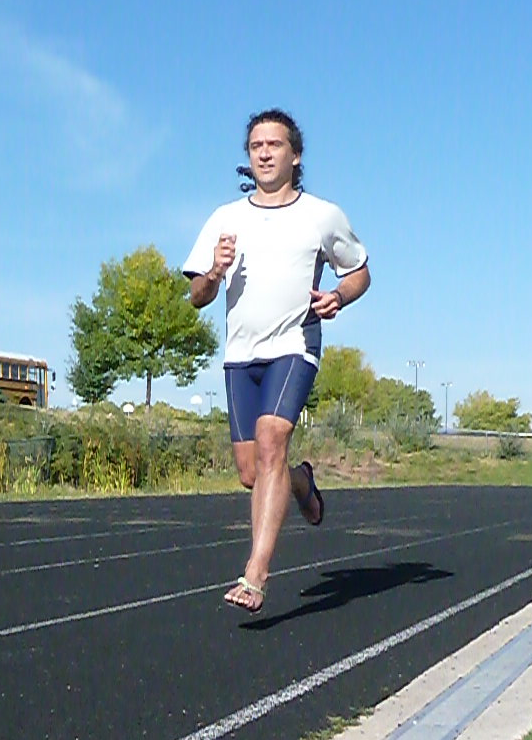
How To Run Barefoot
How to Run Barefoot: Techniques to Get Started “How do I start barefoot running?” “What’s the best book/course/coach for learning to run barefoot?” “Can you show me what the best barefoot running form looks like?” I get these questions a lot. And it’s a bit tricky to answer them for a few reasons: Frankly, if all you did was take off your shoes, go for a run, stop when it hurts, and experiment to find ways of running that feel light, easy and fun (which is the way running with natural form should feel), you would learn more than I, or anyone else, could tell you. Those of us who’ve observed barefoot runners and coached barefoot running are starting to notice the obvious: different runners have slightly different form. That is, when you look at the BEST runners, they have many things in common, but they’re not all doing the exact same thing. So, I don’t want to say something that isn’t going to be relevant for YOU. To be totally candid, I’m in an awkward political situation — as a guy who sells “barefoot-style” footwear, and who would like to have ALL the coaches referring their clients to me, I can’t single out one coach/book/technique over another (or one “under” another, either). I can tell you that if you listen to ALL of them, and then follow a bit of advice I’ll give, below, you’ll appreciate each coach for his/her unique contribution to your barefoot running form. Many runners aren’t aware of what their bodies are actually doing, so certain recommendations won’t be effective anyway. If I say to you, “don’t land on your heels,” and show you a video of how you’re “supposed” to land on your foot, you may be 100% convinced that you’re doing what I suggested, and then a video might show that you are totally heel-striking. In other words, what I say will be less important than what you learn on your own. However, what I CAN do is offer some thoughts about getting started with barefoot running. Tips on How to Run Barefoot Here are my best tips on how to get started running barefoot, refining your running technique, and enjoying the benefits and fun of barefoot running How to Getting Started Realize that the best coach you have is YOU and your sensations and whatever you can learn from watching video of yourself (especially slow motion video). In fact, you MUST become your own best coach, because no external coach will be there for every situation you’ll encounter as a runner. If you can’t listen to yourself, make adjustments in what you’re doing, and know when to STOP… no other coach will be helpful anyway. Start SLOWLY and build up. There’s no rush in making the transition to barefoot running. And there’s no way to predict how long it will take YOU. Run barefoot on a hard, smooth surface. These surfaces are best for learning because they give you the most feedback. Remember that barefoot running is a never-ending process. You can always improve. Refining Your Barefoot Running Form To be slightly more specific and technical, and tell you some of what you would discover on your own with enough time and attention: Aim for having your feet land “under your body” - more so than you’re probably used to. Landing with your foot out in front of you too much is “overstriding” and it’s one of the habits that most of us need to work to overcome. You may need to even exaggerate this to get the feel of it — put your feet “behind you” when you land. You won’t actually be able to do this, but if you try it will highlight what overstriding feels like… and the correct place to put your feet is probably somewhere in between. You want to land forefoot or midfoot. Do NOT reach out with your foot to do this; that’s the opposite of what you want to do. By the way, If you land with your foot underneath your body it's almost impossible not to land on your forefoot or midfoot. You don’t need to stay on the balls of your feet and put extra strain on your calves and Achilles tendons. Once you land on the ball/midfoot, you can let your heel drop if it feels better to do that, and it will feel better/worse depending on whether you’re going uphill or downhill or on a flat surface, and depending on what speed you’re running. Don’t PULL your foot toward you, or PUSH it behind you… that’ll cause blisters as well as put extra strain on your hamstrings (pulling) and calves (pushing). Think, instead, about PLACING your foot on the ground and LIFTING it off. And lift by using your hip flexor. That is, think about lifting your foot off the ground by lifting up your knee, not by pushing off the ground. Un-Plop your feet. This is hard to describe, but many of us slam our feet into the ground, or wait for the ground to hit our feet. We plop them onto the ground instead of meeting the ground lightly. There are a lot of “cues” coaches use to teach this: Pretend you’re running on hot coals, or on thin ice, or trying to sneak up on a deer, or that your feet are wheels and you want them to touch where the wheel meets the ground, or that the ground is moving below you like a treadmill and you want to move your feet at the same speed as the treadmill. You will need to find your own way to feel this. Keep your core tight… when you run, your body is a spring. If you collapse in your midsection, you’re weakening the spring and making it less efficient and, therefore, making it harder to run. Pick up your cadence. Most people think 180 steps-per-minute is some magic number. It’s not. Some successful runners do more, some do less. The point of moving your feet faster than you’re probably used to is that it gives you less time to keep your feet on the ground… and that’ll help you learn to place/lift, “un-plop” and not overstride. LISTEN to the sound your feet are making… if you’re running loudly, if you make a lot of noise when your feet hit the ground, you’re doing one of the above incorrectly. This is true if you’re barefoot, in our barefoot shoes, or any other footwear. You can run quietly (not silently), and quiet running is usually a sign of good form. WONDER! When I run, I keep a question in my mind, “How can I make this lighter, easier, and more fun… and, sometimes, faster?” Then, I experiment and see what I can find. Finally, and most importantly: REST. Bodies get stronger when you let them rest. There are no bonus points for not taking a day off. HAVE FUN! If it’s not fun, do something different. Try a different surface, a different speed, a different reason for running (compete if you haven’t before, do an obstacle course if you’re usually all about putting in mile after mile). I’m sure other barefoot runners have additional pointers. Can’t wait to hear them. Oh, and did I mention, barefoot running can be, should be, and IS (once you get it) FUN… don’t forget that! Want to learn more about learning how to barefoot running? Watch this video below The content of this post does not constitute and is not intended to be a substitute for professional medical advice, diagnosis or treatment. Always seek the advice of a physician or other qualified health provider with any questions or concerns you may have about your health or a medical condition.
Sh*t Barefoot Runners Say...
You're not a real barefoot runner if you haven't said one of these ;-)
Harvard Barefoot Running Studies Support Xero Shoes
What are the benefits of barefoot running? Well, Harvard's Dr. Daniel Lieberman has another answer. His studies from 2 years ago showed how barefoot runners who forefoot strike put less force into the ground and, therefore, less force into their joints. Now he has 2 new studies that have just come out that support how proper barefoot running form and minimalist running shoes can result in fewer injuries and more efficient running. "Foot Strike and Injury Rates in Endurance Runners: a retrospective study" looked at college cross-country runners and found that those who heel-strike (landing on their heels first) had approximately twice the rate of injury than those who forefoot strike. For those of you who've been exploring barefoot running know, proper barefoot form involves landing on the forefoot first. BTW, that doesn't mean you "run on your toes" -- your heel can naturally drop to the ground after the forefoot meets the ground first. In fact, letting your ankle relax is part of the natural spring mechanism of the leg. You may also know that the easiest way to help train yourself to forefoot strike is to go barefoot or wear something genuinely minimalist, like Xero Shoes. The more you can feel the ground when you run, the less you'll want to land on your heel... because IT HURTS! Be careful, though, many shoes that call themselves "minimalist" still have enough padding and protection between you and the ground that you lose the barefoot feel and can still heel strike. In fact a recent barefoot running study by ACE and some video of barefoot runners made by Pete Larson of runblogger.com showed that a majority of Vibram Fivefinger wearers still heel strike as they run. In my experience, this is probably because the VFFs have enough padding (especially the ones made for running, ironically) that the wearers can't tell they're still heel striking. Dr. Lieberman's other study, "Effects of Footwear and Strike Type on Running Economy" demonstrated that runners in minimal footwear have increased efficiency than those in traditional running shoes. Specifically, the study concluded that "Minimally shod runners are modestly but significantly more economical than traditionally shod runners regardless of strike type, after controlling for shoe mass and stride frequency. The likely cause of this difference is more elastic energy storage and release in the lower extremity during minimal shoe running." If minimal shoes make you more efficient, that's good news for us, since Xero Shoes are about the most minimalist running shoe you can find. :-)
4 Reasons NOT to Run Barefoot
[This post is guest-authored by our friend Rob Raux from www.shodless.com]Being barefoot and running barefoot is a blissful and consciousness-expanding endeavor. The feedback supplied from the ground is powerful enough to force even experienced runners to try it for only a mile or so, if they make it that far. Barefoot running, however wonderful, should not be subscribed to dogmatically.There are myriad resources available expounding on the benefits of being barefoot. Most of their reasons, methods, and warnings have merit. Unfortunately many of them sway to heavily towards the one-size-fits-all solution.Experiencing life unshod isn’t always the best option. Putting on a pair of huaraches or other minimalist shoes can serve a number of beneficial purposes: Technical Trail Running. Many people worry that the rocks, twigs, and roots on a trail make barefoot trail running impossible. Not true. First, you use your eyes and avoid what worries you. Second, your feet aren't rigid and can grab and grip and mold around many "obstacles."That said, while there’s nothing better than feeling the grass beneath your feet, having your heel land on an embedded rock leaves something to be desired. To be more specific, it could leave behind a bruise that will take at least a week to heal.That doesn’t include the chance of damaging the fatty tissue which protects your heel bone from impacting the ground. If any of this sounds painful, trust me, it’s worse than you’re picturing.A trail has hazards which you may not wish to risk if you're still an inexperienced barefooter. When a single false step means a week of no running, it’s just not worth it to be ideological about keeping yourself unshod. Additional mileage Your body may be able to take additional mileage, but the bottoms of your feet may not be ready to support it yet barefoot. Now, if you're looking to become a better barefoot runner, this is good news -- when your skin tells you to stop... STOP! Over time it'll adapt (not callous) and you'll be able to put in more miles.Until then, there’s nothing wrong with protecting your precious footsies, but only if you know your form is correct. If you are transitioning from shoes to barefoot and have yet to perfect the change from heel strike to mid foot strike or a forefoot strike, don’t ask for trouble by adding more miles in a minimalist shoe. You’ll find yourself injured promptly and thoroughly.If you are comfortable in your stride, you will find that your feet hit a natural point where further barefoot running may only lead to blisters (that usually means your form has broken down and you're pulling/pushing the ground, instead of placing/lifting). In these cases, adding a protective covering will give you the opportunity to add those additional miles you crave. Racing A foot covering increases your margin for error while running. Proponents of barefoot running tout the pain feedback loop as a beneficial aspect. Any foot covering blocks the pain receptors, which allow you to cause more damage to your body.In a race, this can be a necessary evil. A reduced pain feedback loop allows you to run a longer duration of more intensity. The covering may also absorb some of the mistakes you may have made barefoot (stepping on that rock in your mental fatigue).There’s obviously a very fine line to be ridden here, and one that you can certainly go too far with. Go with the least amount of covering possible and you should be able to dampen and absorb just the minimal amount of error to improve your results.I'd love to say, "If you're not comfortable running that distance, don't race that distance." But I know how some of us... I mean, YOU... can be ;-) The bitter cold Mother nature yields to no man. Don’t even think about getting the best of father winter.If you live in a climate that has a true winter, you know what frostbite feels like. Now try running barefoot.Amazingly, there are folks who do it, and enjoy it. And check out Steven shoveling snow in his huaraches. Frankly, I’ve tried it and even I think that’s crazy. Most people are going to need something to keep their feet protected from the elements (wind, snow, slush, etc.). Each person has a different tolerance, which will adapt as they get more comfortable with the colder weather.When dealing with the elements it’s best to be safer than pull up limp 3 miles from your house and walk the rest of the way home. The content of this post does not constitute and is not intended to be a substitute for professional medical advice, diagnosis or treatment. Always seek the advice of a physician or other qualified health provider with any questions or concerns you may have about your health or a medical condition.
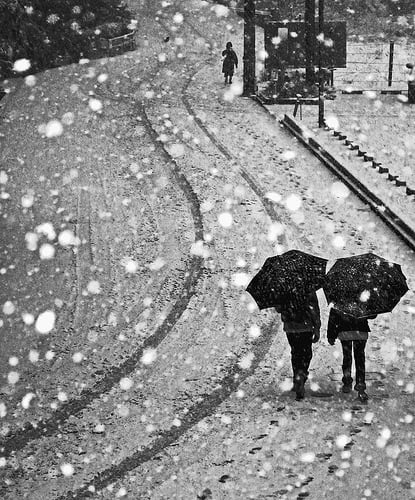
Barefoot in the Cold
Here in the Northern Hemisphere, Winter is upon us. And people email me every day asking what to do if they want to be barefoot or minimalist in the cold weather. While I've written about running barefoot in the cold before, this is a whole new thing ;-)First let me say: DO NOT TRY THIS AT HOME. In other words, don't go out and try to imitate me.I've been barefoot running for over 2 and a half years, and haven't worn a pair of real shoes for more than a total of 3 days in that time.Last winter, I thought, "I'll keep my barefoot shoes on until it seems too cold." And the next thing I knew, it was Spring!So, clearly I've acclimated. And that's not too surprising. Humans (and our hominid cousins) lived in cold climates without shoes for a LOOOONG time. So, we're kinda wired for it, if we give ourselves time to adapt.Here's the video I just shot, after we got 18"+ of snow in Boulder. It's about 15 degrees out.What I did is this: Outside for about 10 minutes Inside to dry off my feet and warm them for 5 Outside for another 10 Inside to dry and warm for about 3 Outside for 30+ minutes... by this time my body temp had gone way up. I was sweating quite a bit. And my feet felt totally warm. Not numb. Warm. When I got inside after finishing the shoveling, they didn't have to thaw or warm up or anything. Lena wants me point out that you should check the Wiki about frostbite so you don't do something stupid and get hurt ;-)The content of this post does not constitute and is not intended to be a substitute for professional medical advice, diagnosis or treatment. Always seek the advice of a physician or other qualified health provider with any questions or concerns you may have about your health or a medical condition.
Bare feet are not just for running
If you thought being barefoot was just about running... HA!And if you worry about things you might step on... HA! HA!
Barefoot Running Sandals vs. Running Shoes
A barefoot running vs. running shoes "infographic" I'm get all geeky over well-presented information, and the graphic about barefoot running and regular running shoes from XRayTechnicianSchoools.net is a pleasure. Whenever someone says to me "Barefoot running can cause injuries" I remind them of the fact in 1/3 of the infographic: 90% (I heard 80%) of marathoners get injured each year. When people ask me about wearing barefoot running shoes in the winter, I remind them of that big squiggly time line showing that for hundreds of thousands of years, we would walk and run barefoot, without shoes, in some pretty cold places (in other words, your body, given time, will acclimate). And, I agree that being barefoot is not appropriate all the time... like when you want to get into a restaurant. Hence the value of our high-tech upgrade on the Tarahumara huarache-inspired shoes and sandals, where you still get a great barefoot feel, but can get into restaurants. I also got a great flashback from the 1974 timeline: I vividly remember getting my first pair of Nike Waffle Trainers. What's funny is that most people remember that it allowed you to land on your heel. I remember that it had such a large amount of "toe spring" (a curve up from the ball of your foot to your toes) that it kept me on my toes! (I was, and still am, a sprinter, so I don't spend much time running on my heels). AMAZING to see that barefoot running shoes are a $1.7 billion industry, in part because the market has grown MUCH faster than anyone imagined it would. But also because most of the barefoot running shoes are SO expensive. Minimalist shoes clearly doesn't mean minimalist prices, it seems ;-) And, of course, I agree about the best way to start barefoot running (there's no rush to make the transition out of running shoes and over to barefoot) Created by: X Ray Technician Schools The content of this post does not constitute and is not intended to be a substitute for professional medical advice, diagnosis or treatment. Always seek the advice of a physician or other qualified health provider with any questions or concerns you may have about your health or a medical condition.



